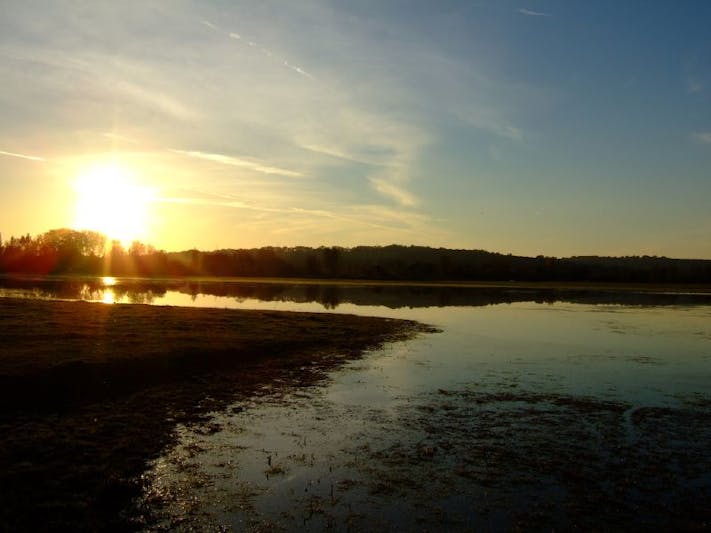While garden centres are being allowed to reopen and parks can now be used for exercise and recreation as much as you like, we are all encouraged to stay at home as much as possible. So in case you're missing the sights and sounds of your favourite outdoor space, we've gathered some of the best ways to enjoy the natural world - from the skies to the deep sea - from the safety of home
One step at a time
Oxfordshire Mind’s resources for wellbeing include a series of Virtual Walks, covering journeys through locations near and far: Christ Church Meadow, North Oxford (incorporating Port Meadow), and even the surface of the moon! You can listen to the walks being narrated as you do your own indoor exercise, or just read through the descriptions and enjoy the photos as a calming distraction.

A different kind of live tweeting
Taking a moment to listen out for birdsong can be powerfully calming, yet is a really easy way to get in touch with nature - at a push, it can be done just by opening a window. The experience gets richer if you’re able to identify what you’re hearing, so check out the National Trust’s guide to recognising different voices amongst a chorus of feathered friends.
The Nest Collective is a wonderful organisation that brings together folk music with experiences of the natural world. Last year, their Singing With Nightingales show captivated audiences at The Old Fire Station, as musicians duetted with live-streamed nightingale song. The live shows this year couldn’t go ahead, of course, but the collective created a virtual alternative that’s incredibly soothing to listen to.
Scrolling in the deep
One thing that we’re particularly missing at the moment, especially when the sun comes out, is swimming. But you can still go on a deep sea adventure (reaching depths you’d never be able to otherwise, unless you’ve got a good submarine handy!) and learn about the otherworldly inhabitants of the sea floor, thanks to this virtual deep sea dive. It’s absorbing, fascinating and at times a little scary - but seeing how much wildlife there is even in extreme conditions could be an encouraging metaphorical lesson…
Another way to enjoy aquatic life - and possibly to trick yourself into thinking you’ve gone on a snorkelling holiday - is through this TurtleCam. A camera (designed to be totally harmless to the turtle) was placed on a turtle’s shell, to follow it for three hours as it swam around just off the coast of the Bahamas. The aim was to study endangered species to better understand how they can be protected - and the results are available for all the world to see and relax with!
Critters on camera
While remaining closed to the public, zoos are of course still full of life, and conservation work which can be done in socially-distanced safety carries on. Get a glimpse of what other species are up to through live webcams. Edinburgh Zoo lets you hang out with playful lion cubs, an elusive tiger (if you’re very lucky!) and a friendly koala, while closer to home, Cotswold Wildlife Park have live footage from meerkats and penguins.
Hands-on activities
If you need some time off from the screens, there are a number of ways to make your home more wildlife friendly. Why not sign up to the Wildlife Trusts’ 30 Days Wild challenge? You’ll get a free, downloadable activity pack which will help you to do ‘one wild thing a day’ and they’re designed so that you can adapt them to your living situation (e.g. not having access to a garden or being able to leave the house).
The Berkshire, Buckinghamshire and Oxfordshire Wildlife Trust also have some great resources for creating wildlife habitats simply using containers, so that you can create a mini garden on your doorstep or windowsill if you don’t have a bigger outdoor space. We particularly like their ‘pot in a pond’ idea!
Similarly, Naturehood is an online platform that’s building a community around taking action for native wildlife. They have free guides for making things like bird boxes and hedgehog highways, and the ability to log your activities and observations, to help monitor and conserve wildlife populations around the country.
Finally, a hands-off activity: you can help pollinators by taking no action, and avoid mowing your lawn! The No Mow May challenge aims to encourage bees and other pollinators (whose populations are crucial, yet dwindling), transforming your lawn into a pretty mini-meadow in the process.




